About to launch ... scheduled July 1 ...
Solving Dark Cosmic Mysteries: ESA’s Euclid Mission Into the Unknown
ESA’s Euclid mission is designed to explore the composition and evolution of the dark Universe. The space telescope will create a great map of the large-scale structure of the Universe across space and time by observing billions of galaxies out to 10 billion light-years, across more than a third of the sky. Euclid will explore how the Universe has expanded and how structure has formed over cosmic history, revealing more about the role of gravity and the nature of dark energy and dark matter.
ESA’s Euclid mission is designed to explore the composition and evolution of the dark Universe. The space telescope will create a great map of the large-scale structure of the Universe across space and time by observing billions of galaxies out to 10 billion light-years, across more than a third of the sky. Euclid will explore how the Universe has expanded and how structure has formed over cosmic history, revealing more about the role of gravity and the nature of dark energy and dark matter.
Can Euclid help figure out this mystery? ...
The Universe Throws a Curveball: The Dark Matter Distribution Paradox
Astrophysicists found the “clumpiness” of Universe’s dark matter to be 0.76, a figure conflicting with the Cosmic Microwave Background value of 0.83, indicating possible errors or an incomplete cosmological model. The research used the Hyper Suprime-Cam Subaru Strategic Program data and will further investigate this compelling discrepancy.
Astrophysicists found the “clumpiness” of Universe’s dark matter to be 0.76, a figure conflicting with the Cosmic Microwave Background value of 0.83, indicating possible errors or an incomplete cosmological model. The research used the Hyper Suprime-Cam Subaru Strategic Program data and will further investigate this compelling discrepancy.
Not merely a theoretical question ... but does not this "junk code" also result in our tendencies to kill and abuse each other too? ...
Robot Souls and “Junk Code”: Should AI Be Given a Human Conscience?
Dr. Eve Poole’s book “Robot Souls” explores the concept of embedding ‘junk code’—traits such as emotions and free will—into AI systems. She proposes this as a solution to ethical dilemmas in AI, arguing these human traits are crucial for societal survival and should be integrated into AI development for ethical and value-aligned automation.
... She argues that in its bid for perfection, humans stripped out the ‘junk code’ including emotions, free will, and a sense of purpose.
She said: “It is this ‘junk’ which is at the heart of humanity. Our junk code consists of human emotions, our propensity for mistakes, our inclination to tell stories, our uncanny sixth sense, our capacity to cope with uncertainty, an unshakeable sense of our own free will, and our ability to see meaning in the world around us.
“This junk code is in fact vital to human flourishing, because behind all of these flaky and whimsical properties lies a coordinated attempt to keep our species safe. Together they act as a range of ameliorators with a common theme: they keep us in community so that there is safety in numbers.”
... She said: “If we can decipher that code, the part that makes us all want to survive and thrive together as a species, we can share it with the machines. Giving them to all intents and purposes a ‘soul’.”
In the new book, Poole suggests a series of next steps to make this a reality, including agreeing a rigorous regulation process, and an immediate ban on autonomous weapons along with a licensing regime with rules that reserve any final decision over the life and death of a human to a fellow human.
She argues we should also agree the criteria for legal personhood and a road map for Al toward it.
... “Because humans are flawed we disregarded a lot of characteristics when we built AI,” Poole explains. “It was assumed that robots with features like emotions and intuition, that made mistakes and looked for meaning and purpose, would not work as well. “But on considering why all these irrational properties are there, it seems that they emerge from the source code of soul. Because it is actually this ‘junk’ code that makes us human and promotes the kind of reciprocal altruism that keeps humanity alive and thriving. ...
https://scitechdaily.com/robot-souls...pand_article=1
Dr. Eve Poole’s book “Robot Souls” explores the concept of embedding ‘junk code’—traits such as emotions and free will—into AI systems. She proposes this as a solution to ethical dilemmas in AI, arguing these human traits are crucial for societal survival and should be integrated into AI development for ethical and value-aligned automation.
... She argues that in its bid for perfection, humans stripped out the ‘junk code’ including emotions, free will, and a sense of purpose.
She said: “It is this ‘junk’ which is at the heart of humanity. Our junk code consists of human emotions, our propensity for mistakes, our inclination to tell stories, our uncanny sixth sense, our capacity to cope with uncertainty, an unshakeable sense of our own free will, and our ability to see meaning in the world around us.
“This junk code is in fact vital to human flourishing, because behind all of these flaky and whimsical properties lies a coordinated attempt to keep our species safe. Together they act as a range of ameliorators with a common theme: they keep us in community so that there is safety in numbers.”
... She said: “If we can decipher that code, the part that makes us all want to survive and thrive together as a species, we can share it with the machines. Giving them to all intents and purposes a ‘soul’.”
In the new book, Poole suggests a series of next steps to make this a reality, including agreeing a rigorous regulation process, and an immediate ban on autonomous weapons along with a licensing regime with rules that reserve any final decision over the life and death of a human to a fellow human.
She argues we should also agree the criteria for legal personhood and a road map for Al toward it.
... “Because humans are flawed we disregarded a lot of characteristics when we built AI,” Poole explains. “It was assumed that robots with features like emotions and intuition, that made mistakes and looked for meaning and purpose, would not work as well. “But on considering why all these irrational properties are there, it seems that they emerge from the source code of soul. Because it is actually this ‘junk’ code that makes us human and promotes the kind of reciprocal altruism that keeps humanity alive and thriving. ...
https://scitechdaily.com/robot-souls...pand_article=1
Decoding Emotional Intelligence: MIT’s Computational Model Excels in Predicting Emotions
MIT neuroscientists have created a computational model that successfully predicts human emotions — including joy, gratitude, confusion, regret, and embarrassment — in social scenarios, using the prisoner’s dilemma game as a base. The model considers individuals’ desires, expectations, and the influence of observers, deducing motivations, comparing outcomes with expectations, and predicting emotions based on these factors. This model, mimicking human social intelligence, outperformed other emotion prediction models, and researchers aim to adapt it for broader applications.
MIT neuroscientists have created a computational model that successfully predicts human emotions — including joy, gratitude, confusion, regret, and embarrassment — in social scenarios, using the prisoner’s dilemma game as a base. The model considers individuals’ desires, expectations, and the influence of observers, deducing motivations, comparing outcomes with expectations, and predicting emotions based on these factors. This model, mimicking human social intelligence, outperformed other emotion prediction models, and researchers aim to adapt it for broader applications.
Forget about the AI apocalypse. The real dangers are already here
Altman, whose company is behind the viral chatbot tool ChatGPT, joined Google DeepMind CEO Demis Hassabis, Microsoft’s CTO Kevin Scott and dozens of other AI researchers and business leaders in signing a one-sentence letter last month stating: “Mitigating the risk of extinction from AI should be a global priority alongside other societal-scale risks such as pandemics and nuclear war.” ... For Marcus, a self-described critic of AI hype, “the biggest immediate threat from AI is the threat to democracy from the wholesale production of compelling misinformation.”
Generative AI tools like OpenAI’s ChatGPT and Dall-E are trained on vast troves of data online to create compelling written work and images in response to user prompts. With these tools, for example, one could quickly mimic the style or likeness of public figures in an attempt to create disinformation campaigns.
In his testimony before Congress, Altman also said the potential for AI to be used to manipulate voters and target disinformation were among “my areas of greatest concern.”
Even in more ordinary use cases, however, there are concerns. The same tools have been called out for offering wrong answers to user prompts, outright “hallucinating” responses and potentially perpetuating racial and gender biases.
...
https://us.cnn.com/2023/06/16/tech/a...ngs/index.html
Altman, whose company is behind the viral chatbot tool ChatGPT, joined Google DeepMind CEO Demis Hassabis, Microsoft’s CTO Kevin Scott and dozens of other AI researchers and business leaders in signing a one-sentence letter last month stating: “Mitigating the risk of extinction from AI should be a global priority alongside other societal-scale risks such as pandemics and nuclear war.” ... For Marcus, a self-described critic of AI hype, “the biggest immediate threat from AI is the threat to democracy from the wholesale production of compelling misinformation.”
Generative AI tools like OpenAI’s ChatGPT and Dall-E are trained on vast troves of data online to create compelling written work and images in response to user prompts. With these tools, for example, one could quickly mimic the style or likeness of public figures in an attempt to create disinformation campaigns.
In his testimony before Congress, Altman also said the potential for AI to be used to manipulate voters and target disinformation were among “my areas of greatest concern.”
Even in more ordinary use cases, however, there are concerns. The same tools have been called out for offering wrong answers to user prompts, outright “hallucinating” responses and potentially perpetuating racial and gender biases.
...
https://us.cnn.com/2023/06/16/tech/a...ngs/index.html
Takeaways from the roundtable with President Biden on artificial intelligence
... I want people to know - I don't want to alarm people, but I do think that we have to have an honest assessment of the risk so that we can take the actions that are necessary to lower that risk. And I know a lot of people who work inside the AI companies who do not know even how we will safely steward what already exists. There's many dangerous capabilities that are already out there. I do think the stakes of this are incredibly high, and that's why I think people should be calling their members of Congress to advocate for the need to get this international regulation in place and these guardrails. ...
https://www.npr.org/2023/06/22/11838...l-intelligence
... I want people to know - I don't want to alarm people, but I do think that we have to have an honest assessment of the risk so that we can take the actions that are necessary to lower that risk. And I know a lot of people who work inside the AI companies who do not know even how we will safely steward what already exists. There's many dangerous capabilities that are already out there. I do think the stakes of this are incredibly high, and that's why I think people should be calling their members of Congress to advocate for the need to get this international regulation in place and these guardrails. ...
https://www.npr.org/2023/06/22/11838...l-intelligence
We’ve Pumped So Much Groundwater That Earth’s Spin Shifted
Groundwater extraction and redistribution by humans caused the Earth’s rotational pole to shift nearly a meter in two decades (1993-2010), contributing to a sea level rise, reveals a study in Geophysical Research Letters. The most water redistribution occurred in western North America and northwestern India, and efforts to reduce groundwater depletion in such areas could theoretically affect this shift. The phenomenon doesn’t risk shifting seasons but could impact climate over geological time scales.
https://scitechdaily.com/earth-tilte...pand_article=1
Groundwater extraction and redistribution by humans caused the Earth’s rotational pole to shift nearly a meter in two decades (1993-2010), contributing to a sea level rise, reveals a study in Geophysical Research Letters. The most water redistribution occurred in western North America and northwestern India, and efforts to reduce groundwater depletion in such areas could theoretically affect this shift. The phenomenon doesn’t risk shifting seasons but could impact climate over geological time scales.
https://scitechdaily.com/earth-tilte...pand_article=1
Triplex Origami: A Game-Changer in Gene Therapy and DNA Nanotechnology
Scientists have developed a method called triplex origami, using Hoogsteen interactions to fold DNA into various compact shapes, offering potential benefits for gene therapy and DNA nanotechnology. The method protects DNA from enzymatic degradation and could revolutionize the way we manipulate DNA, though current limitations in needing specific building blocks are being addressed.
Every cell in your body contains about 2 meters of DNA, which carries the essential genetic information about you as an individual. If you unwind all the DNA contained in a single person, it would stretch over a staggering distance — enough to reach the sun and back again over 60 times. To handle such astonishingly long molecules, the cell compresses its DNA into compact packages called chromosomes.
“Imagine DNA as a piece of paper on which all our genetic information is written.” Says Minke A.D. Nijenhuis, co-corresponding author of the new paper. “The paper is folded in a very tight structure to fit all this information in a small cell nucleus. But to read the information, parts of the paper have to be unfolded and then folded again. This spatial organization of our genetic code is a central mechanism in life. We, therefore, wanted to create a methodology that allows researchers to engineer and study the compaction of double-stranded DNA.”
In nature, DNA is often made up of two strands that are twisted together into a double helix. One strand contains the genes responsible for encoding our traits and the other strand acts as a backup. These two strands are held together by certain bonds, called Watson-Crick interactions, which allow the two strands to recognize and bind to each other. In addition to these well-known interactions, there is a lesser-known type of interaction between DNA strands. These so-called normal or reverse Hoogsteen interactions allow a third strand to join and form a beautiful triple helical structure: a triplex
In the new article published in the scientific journal Advanced Materials, researchers from Gothelf’s laboratory at Aarhus University have introduced a simple method for organizing DNA strands. The method is based on the aforementioned Hoogsteen interactions. The research shows that using this method, DNA can be bent or “folded” in a way that creates compact structures. These structures can take various forms, from hollow two-dimensional shapes to dense three-dimensional constructions and everything in between. In fact, you can even create structures that resemble a potted flower. The researchers call their method triplex origami (figure below).

Triplex-mediated folding of dsDNA, a) A dsDNA sequence containing triplex-forming domains (coloured) is folded by four TFO strands, i.e. single-stranded DNA acting as staples, into a hairpin structure b) Images of two hairpin structures made with atomic force microscopy (AFM). c) S-shaped structure formed from a polypyrin DNA. d) Assembly of a large TFO origami resembling a potted flower structure from a 9000 bases long piece of double-stranded DNA. Scale bar = 100 nm.
Scientists have developed a method called triplex origami, using Hoogsteen interactions to fold DNA into various compact shapes, offering potential benefits for gene therapy and DNA nanotechnology. The method protects DNA from enzymatic degradation and could revolutionize the way we manipulate DNA, though current limitations in needing specific building blocks are being addressed.
Every cell in your body contains about 2 meters of DNA, which carries the essential genetic information about you as an individual. If you unwind all the DNA contained in a single person, it would stretch over a staggering distance — enough to reach the sun and back again over 60 times. To handle such astonishingly long molecules, the cell compresses its DNA into compact packages called chromosomes.
“Imagine DNA as a piece of paper on which all our genetic information is written.” Says Minke A.D. Nijenhuis, co-corresponding author of the new paper. “The paper is folded in a very tight structure to fit all this information in a small cell nucleus. But to read the information, parts of the paper have to be unfolded and then folded again. This spatial organization of our genetic code is a central mechanism in life. We, therefore, wanted to create a methodology that allows researchers to engineer and study the compaction of double-stranded DNA.”
In nature, DNA is often made up of two strands that are twisted together into a double helix. One strand contains the genes responsible for encoding our traits and the other strand acts as a backup. These two strands are held together by certain bonds, called Watson-Crick interactions, which allow the two strands to recognize and bind to each other. In addition to these well-known interactions, there is a lesser-known type of interaction between DNA strands. These so-called normal or reverse Hoogsteen interactions allow a third strand to join and form a beautiful triple helical structure: a triplex
In the new article published in the scientific journal Advanced Materials, researchers from Gothelf’s laboratory at Aarhus University have introduced a simple method for organizing DNA strands. The method is based on the aforementioned Hoogsteen interactions. The research shows that using this method, DNA can be bent or “folded” in a way that creates compact structures. These structures can take various forms, from hollow two-dimensional shapes to dense three-dimensional constructions and everything in between. In fact, you can even create structures that resemble a potted flower. The researchers call their method triplex origami (figure below).

Triplex-mediated folding of dsDNA, a) A dsDNA sequence containing triplex-forming domains (coloured) is folded by four TFO strands, i.e. single-stranded DNA acting as staples, into a hairpin structure b) Images of two hairpin structures made with atomic force microscopy (AFM). c) S-shaped structure formed from a polypyrin DNA. d) Assembly of a large TFO origami resembling a potted flower structure from a 9000 bases long piece of double-stranded DNA. Scale bar = 100 nm.
Super-Resolution DNA Analysis: Multi-Scanning Individual Molecules for Extreme Precision
Aleksandra Radenovic, head of the Laboratory of Nanoscale Biology in the School of Engineering, has worked for years to improve nanopore technology, which involves passing a molecule like DNA through a tiny pore in a membrane to measure an ionic current. Scientists can determine DNA’s sequence of nucleotides – which encodes genetic information – by analyzing how each one perturbs this current as it passes through. The research was published on June 19 in the journal Nature Nanotechnology. ... “We have combined the sensitivity of nanopores with the precision of scanning ion conductance microscopy (SICM), allowing us to lock onto specific molecules and locations and control how fast they move. This exquisite control could help fill a big gap in the field,” Radenovic says. The researchers achieved this control using a repurposed state-of-the-art scanning ion conductance microscope, recently developed at the Lab for Bio- and Nano-Instrumentation. ...
https://scitechdaily.com/super-resol...eme-precision/
Aleksandra Radenovic, head of the Laboratory of Nanoscale Biology in the School of Engineering, has worked for years to improve nanopore technology, which involves passing a molecule like DNA through a tiny pore in a membrane to measure an ionic current. Scientists can determine DNA’s sequence of nucleotides – which encodes genetic information – by analyzing how each one perturbs this current as it passes through. The research was published on June 19 in the journal Nature Nanotechnology. ... “We have combined the sensitivity of nanopores with the precision of scanning ion conductance microscopy (SICM), allowing us to lock onto specific molecules and locations and control how fast they move. This exquisite control could help fill a big gap in the field,” Radenovic says. The researchers achieved this control using a repurposed state-of-the-art scanning ion conductance microscope, recently developed at the Lab for Bio- and Nano-Instrumentation. ...
https://scitechdaily.com/super-resol...eme-precision/
A “Genetic Parasite” – The Secret Protector of Fertility
The genetic makeup of many species, including humans, contains crucial components known as ribosomal DNA (rDNA) sequences. Due to their highly repetitive pattern, these DNA sequences tend to reduce in size over time, leading to cell death if they shrink excessively. If this happens in germ cells — cells that give rise to eggs and sperm — it can result in infertility and the potential extinction of the individual’s lineage.
Scientists have long theorized that some mechanism works to preserve our rDNA over successive generations, thereby maintaining the fertility of humans and other species. However, the specifics of this process remained unclear until recently. New findings from Yukiko Yamashita, a member of the Whitehead Institute, and postdoc Jonathan Nelson, unveiled an unexpected defender of rDNA: a retrotransposon. Prior to this discovery, retrotransposons were predominantly considered genetic parasites because they seemed to exist only to replicate themselves. What the researchers discovered is that rDNA is restored with the help of a retrotransposon, R2. Retrotransposons are genetic sequences whose primary function is to replicate themselves, even at the expense of the rest of the genome. They have been called genetic parasites, but their behavior is most similar to that of a virus, which manipulates cells into making copies of itself.
...
The genetic makeup of many species, including humans, contains crucial components known as ribosomal DNA (rDNA) sequences. Due to their highly repetitive pattern, these DNA sequences tend to reduce in size over time, leading to cell death if they shrink excessively. If this happens in germ cells — cells that give rise to eggs and sperm — it can result in infertility and the potential extinction of the individual’s lineage.
Scientists have long theorized that some mechanism works to preserve our rDNA over successive generations, thereby maintaining the fertility of humans and other species. However, the specifics of this process remained unclear until recently. New findings from Yukiko Yamashita, a member of the Whitehead Institute, and postdoc Jonathan Nelson, unveiled an unexpected defender of rDNA: a retrotransposon. Prior to this discovery, retrotransposons were predominantly considered genetic parasites because they seemed to exist only to replicate themselves. What the researchers discovered is that rDNA is restored with the help of a retrotransposon, R2. Retrotransposons are genetic sequences whose primary function is to replicate themselves, even at the expense of the rest of the genome. They have been called genetic parasites, but their behavior is most similar to that of a virus, which manipulates cells into making copies of itself.
...
“Cytoelectric Coupling”: A Groundbreaking Hypothesis on How Our Brains Function
A new study proposes a hypothesis called “Cytoelectric Coupling,” arguing that the brain’s electrical fields, created by neural network activity, can influence the physical configuration of neurons’ sub-cellular components to optimize network stability and efficiency. The research, conducted by scientists from MIT, City University of London, and Johns Hopkins University, builds upon earlier studies that showed how rhythmic electrical activity or ‘brain waves’ in neural networks and the influence of electric fields at the molecular level can coordinate and adjust the brain’s functions, facilitating flexible cognition ...
... “The brain adapts to a changing world,” Pinotsis said. “Its proteins and molecules change too. They can have electric charges and need to catch up with neurons that process, store, and transmit information using electric signals. Interacting with the neurons’ electric fields seems necessary.” ...
... If the brain carries information in electric fields and those electric fields are capable of configuring neurons and other elements in the brain that form a network, then the brain is likely to use this capability. The brain can use fields to ensure the network does what it is supposed to do, the authors suggest.
To put it (loosely) in couch potato terms, the success of a television network isn’t just its ability to transmit a clear signal to millions of homes. What’s also important is the details as fine as the way each viewer household arranges its TV, sound system, and living room furniture to maximize the experience. Both in this metaphor and in the brain, Miller said, the presence of the network motivates the individual participants to configure their own infrastructure to participate optimally. ...
https://scitechdaily.com/cytoelectri...pand_article=1
A new study proposes a hypothesis called “Cytoelectric Coupling,” arguing that the brain’s electrical fields, created by neural network activity, can influence the physical configuration of neurons’ sub-cellular components to optimize network stability and efficiency. The research, conducted by scientists from MIT, City University of London, and Johns Hopkins University, builds upon earlier studies that showed how rhythmic electrical activity or ‘brain waves’ in neural networks and the influence of electric fields at the molecular level can coordinate and adjust the brain’s functions, facilitating flexible cognition ...
... “The brain adapts to a changing world,” Pinotsis said. “Its proteins and molecules change too. They can have electric charges and need to catch up with neurons that process, store, and transmit information using electric signals. Interacting with the neurons’ electric fields seems necessary.” ...
... If the brain carries information in electric fields and those electric fields are capable of configuring neurons and other elements in the brain that form a network, then the brain is likely to use this capability. The brain can use fields to ensure the network does what it is supposed to do, the authors suggest.
To put it (loosely) in couch potato terms, the success of a television network isn’t just its ability to transmit a clear signal to millions of homes. What’s also important is the details as fine as the way each viewer household arranges its TV, sound system, and living room furniture to maximize the experience. Both in this metaphor and in the brain, Miller said, the presence of the network motivates the individual participants to configure their own infrastructure to participate optimally. ...
https://scitechdaily.com/cytoelectri...pand_article=1
The Future of Medical Diagnostics: All-Purpose Biosensor Chip With 10,000-Fold Increase in Detection Range
UC Santa Cruz scientists have significantly improved chip-based biosensors, expanding their concentration range detection by over 10,000 times. These advancements enable a single device to perform multiple medical tests simultaneously on different biomolecules, even at vastly different concentrations. The team leveraged machine learning for high accuracy particle recognition, making these devices suitable for real-time data analysis in point-of-care scenarios.
https://scitechdaily.com/the-future-...pand_article=1
UC Santa Cruz scientists have significantly improved chip-based biosensors, expanding their concentration range detection by over 10,000 times. These advancements enable a single device to perform multiple medical tests simultaneously on different biomolecules, even at vastly different concentrations. The team leveraged machine learning for high accuracy particle recognition, making these devices suitable for real-time data analysis in point-of-care scenarios.
https://scitechdaily.com/the-future-...pand_article=1
Harnessing Photosynthesis: A Green Energy Solution for Martian Occupation & Space Exploration
Researchers from the University of Warwick propose using artificial photosynthesis devices, capable of harnessing sunlight to generate oxygen and recycle carbon dioxide, for sustainable energy solutions in space exploration. The devices could potentially be used on the Moon and Mars, improving the efficiency of space travel and informing improvements in Earth-based solar technologies. This is an artist’s concept of an artificial photosynthesis device on Mars.
... There is a need for efficient and reliable energy sources in space to enable the exploration of our solar system. It is hoped that the technology could be installed on the Moon and Mars to harvest green energy to help power rockets and complement life support systems for the production of oxygen and other chemicals as well as the recycling of carbon dioxide. The insights gained in this study with respect to improving device efficiencies also feed back into their optimization for Earth applications and also provide insights into the performance of traditional solar cells in space. ...
https://scitechdaily.com/harnessing-...pand_article=1
Researchers from the University of Warwick propose using artificial photosynthesis devices, capable of harnessing sunlight to generate oxygen and recycle carbon dioxide, for sustainable energy solutions in space exploration. The devices could potentially be used on the Moon and Mars, improving the efficiency of space travel and informing improvements in Earth-based solar technologies. This is an artist’s concept of an artificial photosynthesis device on Mars.
... There is a need for efficient and reliable energy sources in space to enable the exploration of our solar system. It is hoped that the technology could be installed on the Moon and Mars to harvest green energy to help power rockets and complement life support systems for the production of oxygen and other chemicals as well as the recycling of carbon dioxide. The insights gained in this study with respect to improving device efficiencies also feed back into their optimization for Earth applications and also provide insights into the performance of traditional solar cells in space. ...
https://scitechdaily.com/harnessing-...pand_article=1
When Carbon Sinks Sink: New Research Uncovers a Climate Change Time Bomb
A new study reveals that rising global temperatures could convert widespread microbial communities worldwide from carbon sinks to carbon emitters, potentially triggering climate change tipping points. These findings were recently published in the British Ecological Society’s journal, Functional Ecology.
New research finds that under a warming climate, ocean plankton and other single-celled organisms, known as mixotrophic microbes – can switch from being carbon sinks to carbon emitters. The research also finds that changes in the behavior of these organisms right before they switch can act as an early warning signal for climate change tipping points. However, increases in nutrient levels in the environment, such as nitrogen from agricultural runoff, can mute these warning signals.
https://scitechdaily.com/when-carbon...nge-time-bomb/
A new study reveals that rising global temperatures could convert widespread microbial communities worldwide from carbon sinks to carbon emitters, potentially triggering climate change tipping points. These findings were recently published in the British Ecological Society’s journal, Functional Ecology.
New research finds that under a warming climate, ocean plankton and other single-celled organisms, known as mixotrophic microbes – can switch from being carbon sinks to carbon emitters. The research also finds that changes in the behavior of these organisms right before they switch can act as an early warning signal for climate change tipping points. However, increases in nutrient levels in the environment, such as nitrogen from agricultural runoff, can mute these warning signals.
https://scitechdaily.com/when-carbon...nge-time-bomb/
Harnessing Hypnagogia: MIT and Harvard’s Breakthrough in Boosting Creativity Through Targeted Dream Incubation
Researchers from MIT and Harvard have demonstrated that people are more creative when awakened from early sleep stages and guided to dream about a specific topic. This method, facilitated by a device called Dormio, increased creativity by 43% in comparison to those who napped without specific dream guidance.
https://scitechdaily.com/harnessing-...am-incubation/
Researchers from MIT and Harvard have demonstrated that people are more creative when awakened from early sleep stages and guided to dream about a specific topic. This method, facilitated by a device called Dormio, increased creativity by 43% in comparison to those who napped without specific dream guidance.
https://scitechdaily.com/harnessing-...am-incubation/
stlah







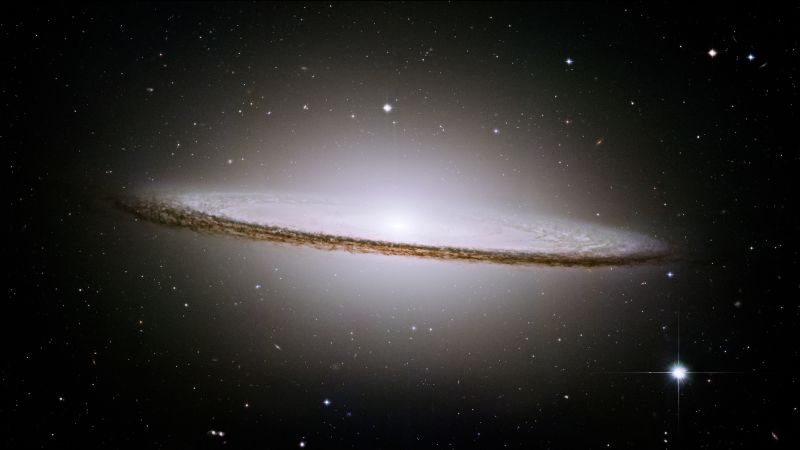







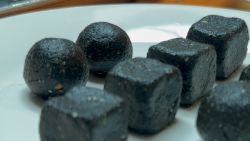
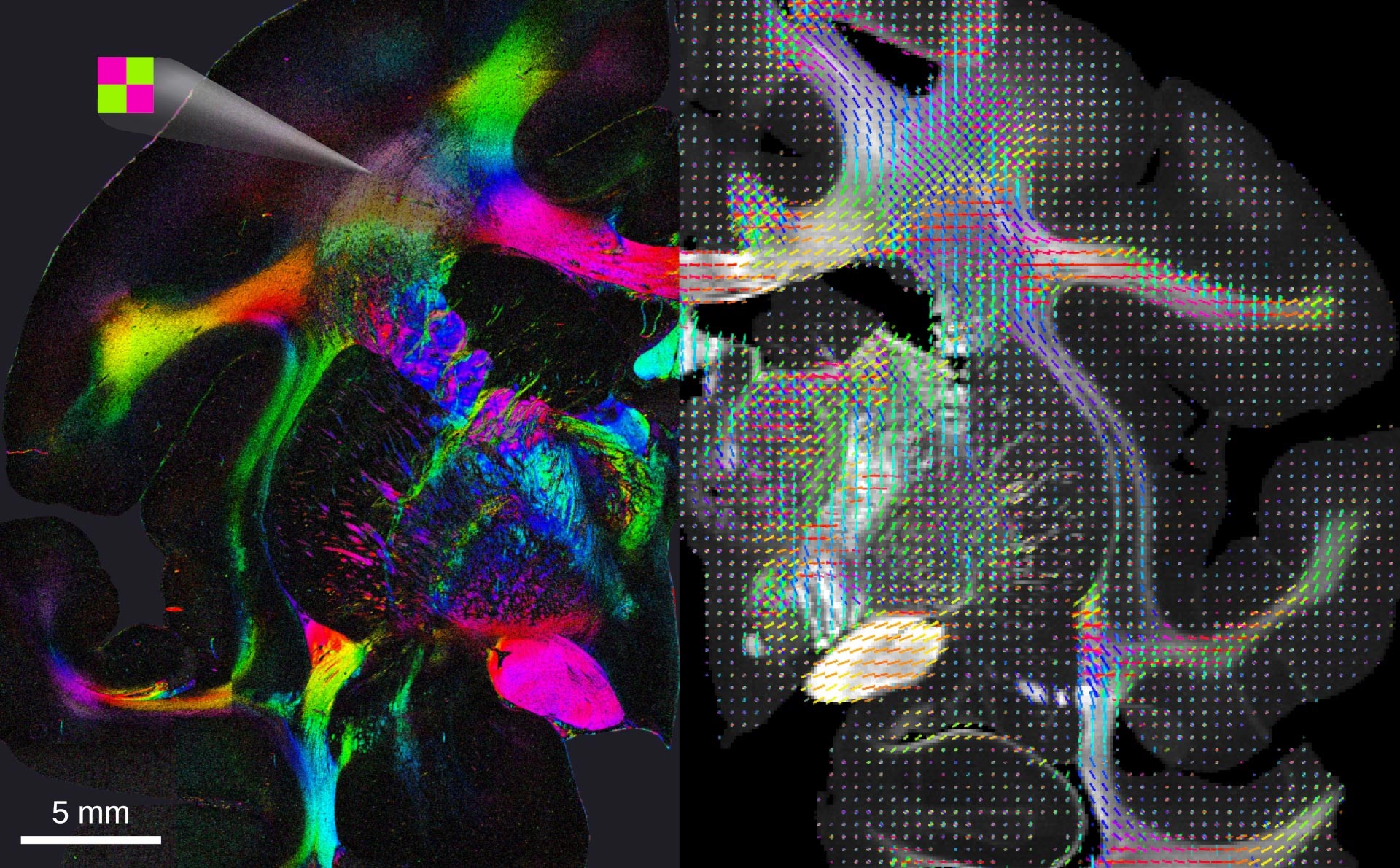

 )
)



















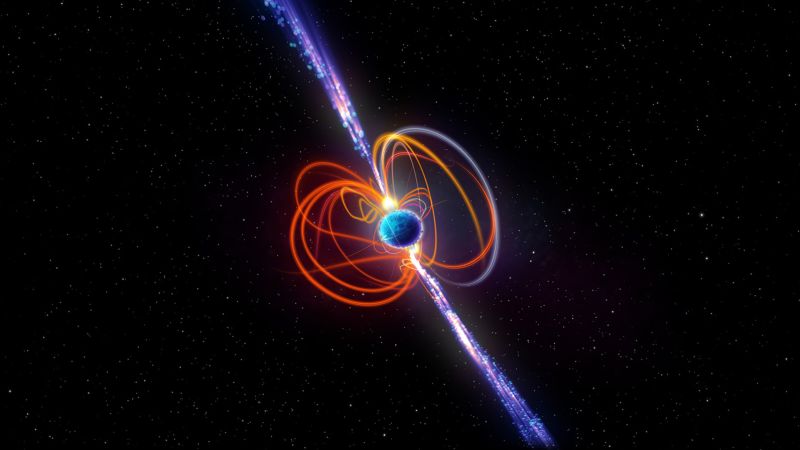




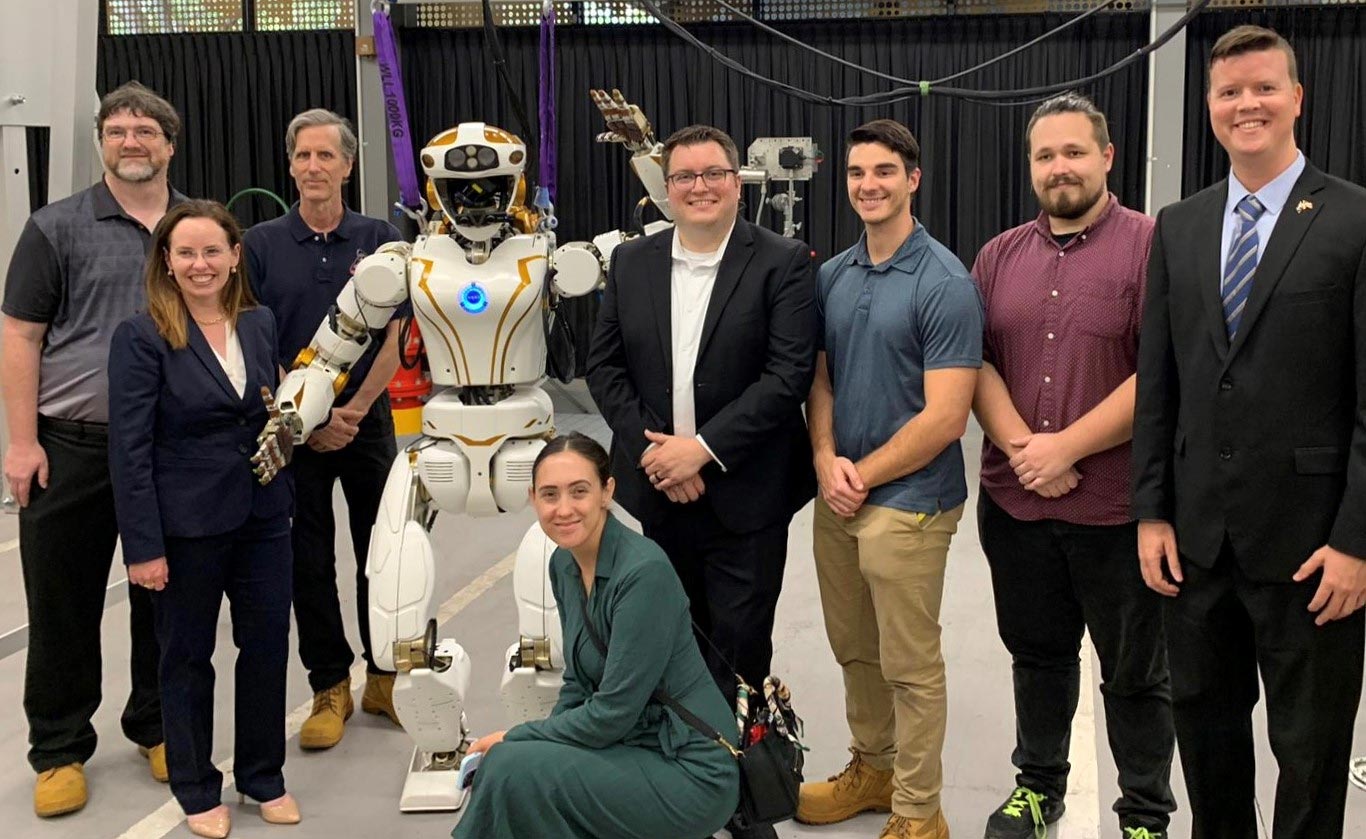
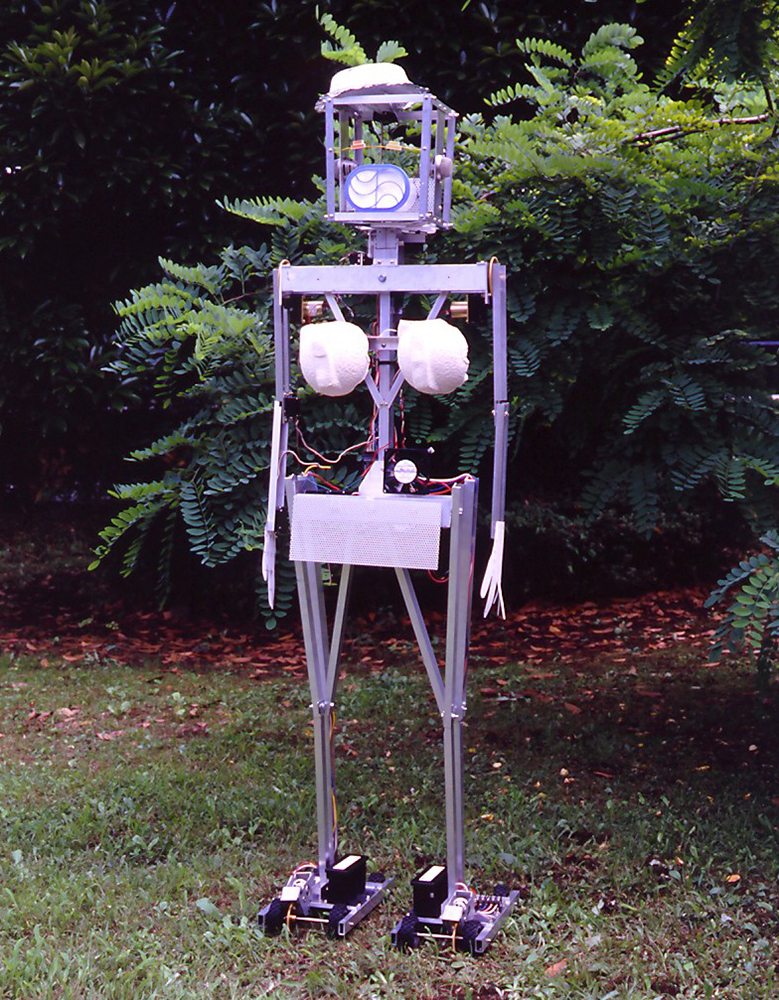
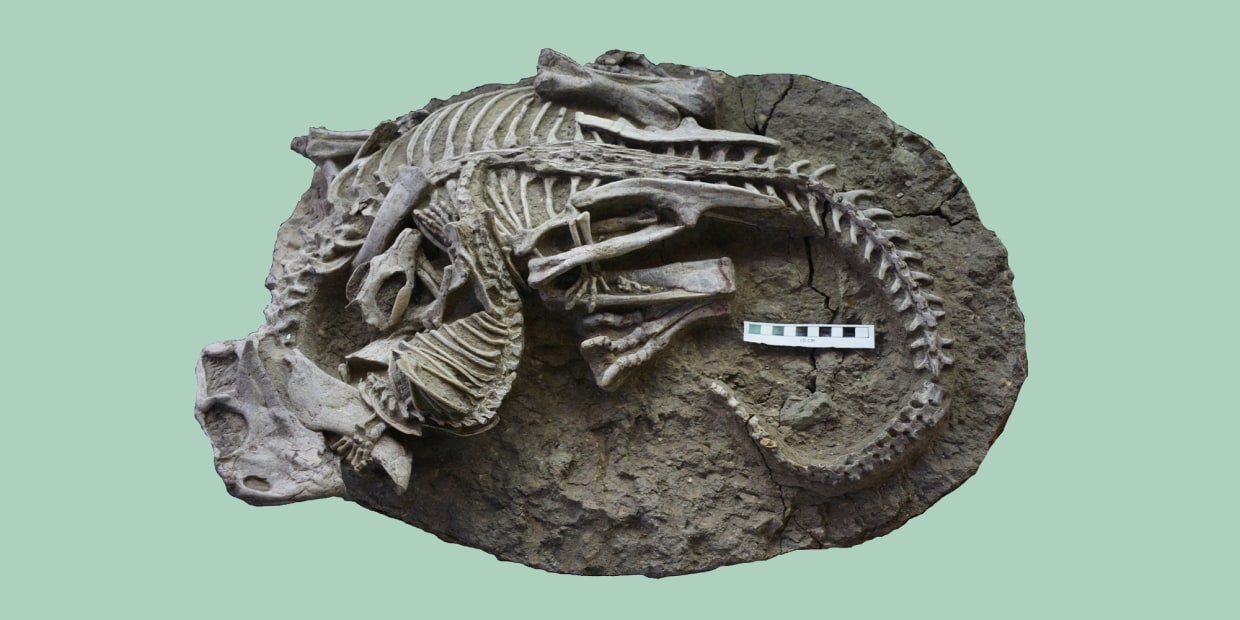





 ... good for the environment, arguably not eating "sentient beings" ...
... good for the environment, arguably not eating "sentient beings" ... 






Comment